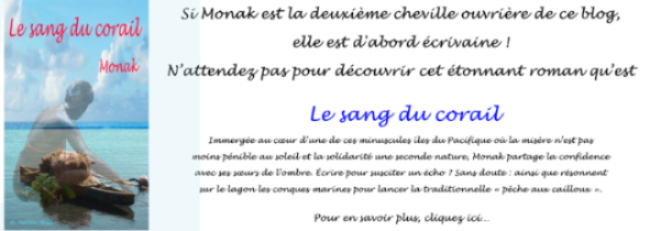Body frill or identity sign…
Reproved during more than 160 years, tatau was almost going to disappear
forever. Nowadays, it finds back its place in Polynesian society. Here is the
story of its revival.
In
Polynesian society, before its evangelization, tattoo had reached a complexity
and an unequalled wealth.
Well beyond
a simple adornment it constituted a social benchmark. It indicates the
membership of a country, a tribe, a family and the rank in the social scale. It
marked the fulfillment of social rites such as the transition from childhood to
puberty, the wedding, etc. It represented remarkable facts of the life of one
who wore it: acts of bravery in war, prowess of hunter or fisherman…
Role and meaning of the tatau
In the vast extent
of all its thinkable meanings was also the depiction of brands of type
“guard-symbol” or “taura” appropriate
to a given family. Finally, it could be purely ornamental.
 |
| A complete Marquesan traditional tattoo reproduced by Karl Von den Steinen |
If almost all Polynesians were tattooed, this
ritual practice was very expensive, essentially because of the festivities
accompanying its realization. The more the family had properties, the more the
tattoos of his members were many and important.
Disappearance of the art of Polynesian tattoo
By a brutal reversal the tattoo was going to
pass, in a few decades, from the status of essential practice to a shameful
custom.
In the trail of the
earliest “discoverers” of Polynesian islands, the first missionaries came to fight
against Polynesian “paganism”. They unload from the end of the 18th
century. Converted to the Catholicism in 1812, king Pomare II doesn’t hesitate
to establish a very sever code directly inspired by the rules of the religion
which he has just embraced.
The death sentence
of the tattoo is signed in 1823, at the beginning of the institution of this
code, which explains: “Nobody will have
to be tattooed; this practice must be completely abolished (…). The man or the woman, who is tattoos engraved,
if the fact is obvious, will be judged and punished. (…) Man’s punishment is
the following one: he will have to work on a portion of road of ten toises (or
60fts) for the first tattoo, twenty toises (or 120fts) for the second. (…)
Woman’s punishment will be the following one: she will have to make two big
coats, the one for king and the other for governor.”
 |
| The drawing of the tattoo |
It’s not so much the practice of the tattoo that the missionaries want to delete but the festivities which accompany its accomplishment and which give rise to all the overflowing; In particular sexual intercourse debaucheries.
There are indeed
some noble persons who refuse this diktat. If the fact of skin marking isn’t
considered as an act of rebellion itself, they are severely condemned. This is how
the tatau practice disappeared totally in the space which will become French
Polynesia.
Karl Von den Steinen’s saving work and the
revival
In 1897 in Marquesas Islands, the
German anthropologist doesn’t count more than around thirty tattooed
individuals, all very old, but mainly no more a single tattooist. He realizes
then accurate raised of Marquesan tattoos. Without this work, all the knowledge
bound to this art would have doubtless disappeared for ever.
In the 1970s,
the only visible tattoos in Polynesia were the ones worn by the servicemen and
the former prisoners. The designs had nothing to do with the traditional tatau
and the tattoo was often privilege of dropouts who wants to post their break
with the established order.
 |
| …The inking of the tattoo |
At the end of the
70s, a festival of the Oceania arts is held in Tahiti. For the majority of the
population, the shock is enormous: in the streets of Papeete, men are walking
in their traditional clothes and they are tattooed. Their skin doesn’t wear
arrow pierced hearts but black and white strange drawings… these men
are essentially Samoan. In Samoa Islands, the tradition of the tattoo never
went out.
Immediately, some
rare Polynesians are going to understand all the importance of what they saw;
they undertook to be tattooed with Polynesian inspiration motives. Above all,
they are going to dash into the practice of the tattoo. Since 1980, the tatau
knows a spectacular development. More and more young adults and teenagers are
tattooed. The motives are in traditional inspirations. Only by inspiration, so
much it’s difficult, more than two century later, to go back up to the sources of
the traditional tatau.
 |
| Tattooed Tattooer |
Today, very rare
are the Polynesians, men and women, who don’t wear at least a tattoo. We can’t
speak any more about a latest fad but about privileged average of a Polynesian
identity assertion. Of course, the religious and social aspects bound to the
traditional society disappeared. However strong functions which crossed the
centuries remain: to signal in one’s flesh the important personal events, to confront
with a real physical trial, even if the modern tools considerably eased it and
to mean ones membership in a group.
At present,
Polynesian tattoo is all over the world considered as one of the summits of
this art.
Thanks to Richard Allouch for his photos and his invaluable collaboration:
An article
of Julien Gué
Translated from French by Monak
Copyright Julien
Gué. Ask for the author’s agreement before any reproduction of the text or
the images on Internet or traditional press.




Aucun commentaire :
Enregistrer un commentaire
Cet article vous a fait réagir ? Partagez vos réactions ici :